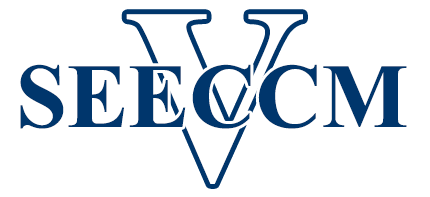5th SEECCM2023 ECCOMAS Conference
Dear Colleagues,
The 5th SEECCM2023 ECCOMAS Conference will be organized on July 5-7, 2023, in Vrnjačka Banja, Serbia.
Vrnjačka Banja is a municipality located in the Raška District, Central Serbia, well-known for its hot springs. Vrnjačka Banja is also the most celebrated and most popular spa town of Serbia and, at same time, a very attractive international recreation center.
The objective of SEECCM 2023 is to bring together engineers, IT experts, bioengineers, biochemists, physicists, and chemists in order to explore fresh ideas for new methodologies and application of computational mechanics.
Scientists of international prestige in the field of the conference have confirmed their participation as keynote speakers. Also, selected papers shall be considered for publication in a special issue of a leading journal published by Springer.
You are invited to submit your abstract to one of the following conference topics: Solid Mechanics, Fluid Mechanics, Coupled Problems, Discrete Modeling, Multiscale Modeling, Biomechanics, Nanomedicine, Cardiovascular Mechanics, Tissue Engineering, Dental Mechanics, Bone Mechanics, Musculoskeletal Mechanics, Sport Biomechanics, Cellular and Molecular Mechanics, Medical Image Computing and Computational Chemistry.
The first SEECCM conference was held in 2006 in Kragujevac, Serbia and during this conference the Serbian Society for Computational Mechanics (SSCM) was founded. On the 10th year anniversary of the SSCM the organizers again invited scientists from South-East Europe and all over the world to the same city. Fourth SEECCM conference was organized again in Kragujevac. The previous four SEECCM conferences were very successful and had a profound impact on the goals of the regional and the world community of scientist to invent and apply computational methods in the continuously increasing demands in science, technology and medicine. The major advancements in industrial, technological and biomedical processes can nowadays be achieved only through integration of the work of researchers in different scientific fields. Today, computational mechanics is a very developed and integrative field which uses fundamental scientific laws and computer methods to study, predict and simulate material, engineering, physical, chemical and biomedical processes. Computer simulations are indispensable in testing hypotheses and assembling information in a quantitative context.
The objective of SEECCM 2023 is to bring together engineers, IT experts, bioengineers, biochemists, physicists, and chemists in order to explore fresh ideas for new methodologies and application of computational mechanics.
Scientists of international prestige in the field of the conference have confirmed their participation as Plenary Lecturers. These lectures will be complemented by Invited Sessions organized by recognized experts in targeted research areas.
Conference Organizers
- Prof. Miloš Kojić, Serbian Academy of Sciences and Arts, Serbia
- Prof. Nenad Filipović, University of Kragujevac, Serbia
- Prof. Manolis Papadrakakis, National Technical University of Athens, Greece
Scientific Committee
- BATHE Klaus-Jurgen, USA
- BESKOS Dimitri, Greece
- CALO Victor, S Arabia
- CAR Zlatan, Croatia
- EXARCHOS Themis, Greece
- FERRARI Mauro, USA
- FILIPOVIC Nenad, Serbia
- FOTIADIS Dimitrios, Greece
- GARBEY Marc, USA
- IBRAHIMBEGOVIC Adnan, France
- JEREMIC Boris, USA
- JR HUGHES Thomas, USA
- KOJIC Nikola, USA
- MANG Herbert, Austria
- MATTHIES Hermann, Germany
- MIJAILOVIC Srboljub, USA
- MIKIC Borivoje, USA
- NESTOROVIC Tamara, Germany
- ONATE Eugenio, Spain
- OSTROGORSKY Aleksandar, USA
- PAPADOPULOS Panos, USA
- PAPADOPULOS Vissarion, Greece
- PAPADRAKAKIS Manolis, Greece
- ROSIC Bojana, Germany
- SCHREFLER Bernhard, Italy
- SORIC Jurica, Croatia
- STAMENOVIC Dimitrije, USA
- TSUDA Akira, USA
- ZIEMYS Arturas, USA
Important Dates
- Abstract submission April 20th, 2023
- Notification of abstract acceptance April 30th, 2023
- Extended abstract submission May 15th, 2023
- Notification of extended abstract June 1st, 2023
- Deadline for payment June 15th, 2023
Conference Venue
The 5th SEECCM2023 ECCOMAS Conference will be held at the Hotel Vrnjačke Terme, Vrnjačka Banja.
Accommodation at the hotel can be booked by e-mail prodaja@vrnjacketerme.rs with an e-mail subject – SEECCM 2023 Conference (in order to get a special discount for accommodation as a conference participant).
Plenary Speakers
- Prof. Adnan Ibrahimbegović – Professor Classe Exceptionnelle, Member Senior IUF-Institut Universitaire of France and Chair for Computational Mechanics at University of Technology Compiègne, France
- Prof. Themis Exarchos -Associate Professor of Data Modeling and Decision Support Systems in the Dept. of Informatics, Ionian University and the Director of the Technology Transfer Office of Ionian University, Corfu, Greece
- Prof. Milica Radišić – University of Toronto, Tier 1 Canada Research Chair in Organ-on-a-Chip Engineering and a Senior Scientist at the Toronto General Research Institute, Canada
- Prof. Bernhard Schrefler – Professor Emeritus at the University of Padova and Hans-Fischer Senior Fellow at the Institute for Advanced Study of the Technical University of Munich
- Prof. Christian Hellmich – full Professor at Technische Universität Wien (TUW, Vienna, Austria), Director of the Institute for Mechanics of Materials and Structures
- Prof. Boris Jeremić – Professor of Civil Engineering in the Department of Civil and Environmental Engineering at the University of California, Davis, CA, USA
- Prof. Hermann G. Matthies – Emeritus Professor in the Carl-Friedrich-Gauss faculty at TU Braunschweig, Germany
- Prof. Nenad Đorđević – Senior Lecturer in Mechanical Engineering at Brunel University London, UK
- Prof. Saša Kenjereš – Full Professor of Applied Physics and Chemical Engineering at the Delft University of Technology, Delft, The Netherlands
Prof. Adnan Ibrahimbegović
Title: Synergy of Multiscale Modelling and Machine Learning in Complex Structure/System Analysis
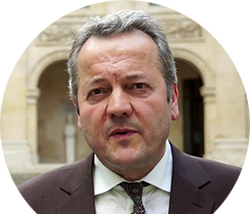
Abstract
In this work we show that the structural engineering models are very helpful in constructing an accessible basis to experts in different domains of engineering science in order to build best microscale representation (as replacement of atomistic models) in multi-scale models for various multi-physics phenomena. Thus, we seek to provide a priori selection of reduced model by means of corresponding kinematic hypotheses and constraints that reduce the cost compared to standard solid or continuum mechanics approach (e.g. see [1,2])
Such an approach is opposite of the currently active research on constructing such reduced model in a posteriori fashion, by using the statistical approach of data processing to provide the reduced model in terms of Proper Orthogonal Decomposition (POD) or Proper Generalized Decomposition (PGD), which seems to reduce the model construction skills to the application of artificial intelligence algorithms.
The illustrations of these ideas come from current applications in multiscale modeling and probability computations. We provide only a brief presentation of the useful synergy between the nonlinear mechanics and stochastic that can be used not only to build the model of interest for dealing with real-\-life heterogeneous structures, but also to develop solution procedures that reach way beyond traditional engineering tools [3].
References
[1] A. Ibrahimbegovic, Nonlinear solid mechanics: theoretical formulations and finite element solution methods, Springer 2009
[2] A. Ibrahimbegovic, Computational Methods for Solids and Fluids: Multiscale Analysis, Probability Aspects and Model Reduction, Springer 2016
[3] A. Ibrahimbegovic, Mejia-Nava, R.A., Structural Engineering: Models and Methods for Statics, Instability and Inelasticity, Springer 2023
Biography
Dr Adnan Ibrahimbegović is Professor Classe Exceptionnelle, Member Senior IUF-Institut Universitaire of France and Chair for Computational Mechanics at University of Technology Compiègne, a member of Alliance of Sorbonne Université (created with merger of Paris-Sorbonne and Université Pierre Marie Curie). He has obtained his engineering education in Sarajevo, PhD at the University of California Berkeley, USA and Habilitation at University Pierre Marie Curie in Paris, France. He has held professorships and research positions at four different universities (including UC Berkeley, USA; EPFL, Switzerland; ENS-Cachan, France and currently UTC, France). He is the past Chairman of ENS-Cachan Teaching and LMT-Cachan Research Departments and Head of Master Program MaiSE. He has received a number of international distinctions, including IACM Fellow Award, Humboldt Research Award for Germany, Research Award for Slovenia, International Fellow NSERC Award for Canada, ‘Claude Levy-Strauss’ Chair for Univ. Sao Paulo, Brazil, ‘Asgard’ Chair for NTNU, Norway, KAIST Invited Professor, South Korea, ‘Hôte Académique’ Award for EPFL, Switzerland. He has published more than 200 papers in scientific journals and 10 textbooks and monographs.
Prof. Themis Exarchos
Title: Computational Modeling for Natural Language Processing and Speech Production
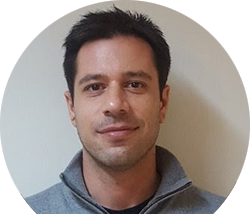
Abstract
Natural Language Processing (NLP) is an interdisciplinary field which blends statistical, machine learning, and deep learning models with computational linguistics, including rule-based modeling of human language. With the use of these technologies, computers are now able to process human language in the form of text or audio data and fully “understand” what is being said or written, including the speaker’s or writer’s intentions and sentiment. In this work, we focus on the development of an AI empowered approach to produce speech from audiovisual information which is extracted from tracheostomy patients in Greece. To this end, a multimodal, lip reading, deep learning pipeline based on a hybrid architecture which combines 3D convolutional neural networks with long short term memory (LSTM) neural networks was initially designed to classify diverse words from Greek patients prior to the operation procedure. The hybrid DL model was trained on each individual patient to capture the unique characteristics of each patient’s word and audio spectrum characteristics, at a personalized level. Each personalized DL model was then enriched with audio information extracted from video captures to not only produce speech but also to increase the levels of realism of the speech production process. A case study was conducted including 10 patients yielding favorable classification performance and quality of the speech production process.
Biography
Dr Themis Exarchos holds an Engineering Diploma, from the Dept. of Computer Engineering and Informatics of University of Patras (2003) and a PhD in Medical Informatics from the Medical School of the University of Ioannina (2009). He has more than 200 publications in journals, conference proceeding and book chapters. He has worked in many research and development projects, funded by EU and other bodies. He is an Associate Professor of Data Modeling and Decision Support Systems in the Dept. of Informatics, Ionian University, Corfu, Greece and the Director of the Technology Transfer Office of Ionian University. He is also o visiting Professor in the Faculty of Engineering, University of Kragujevac
Prof. Milica Radišić
Title: Heart-on-a-chip for Modelling of Healthy and Diseased Myocardium
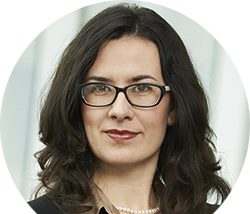
Abstract
The new field of organ-on-a-chip engineering, relies on engineered, microfabricated, devices to drive establishment and measurement of critical physiological properties (e.g. contractility). My group has lead the way by a) defining an electrical stimulation protocol, in Nature Methods of ramping frequency increase (up to 6Hz) that enables iPSC-CM maturation; and as described in Cell by b) eliminating the use of drug absorbing PDMS; c) enabling non-invasive continuous measurement of contraction force by imaging; d) creating defined atrial, ventricular and atrioventricular tissues from human iPSC and e) modeling a polygenic cardiac disease, left ventricular hypertrophy, for the first time using cells from patients with high blood pressure who are enrolled in NIH HyperGen study. Critical for this success is the electrical field stimulation of iPSC-CM derived tissues using ramping frequency increase. In our initial experimental design, we ramped the frequency up to 3Hz expecting cell maturation, as heart rate peaks at 3Hz at 7 weeks gestation. Ramping the frequency to 6Hz was originally designed with the expectations that heart failure conditions will arise since pacing was too fast. Surprisingly, the data demonstrated superior cell maturation in the 6Hz vs 3Hz group. In a follow-up, we learned that we can achieve much needed atrial vs ventricular specification depending on how fast we ramp up the frequency to 6Hz and that we can build precious diseased heart muscles from patient iPSC if we stimulate long enough. In this presentation, I will present our most recent data on modelling covid19 induced myocarditis and testing of new molecules that prevent cytokine storm as well modelling cardiomyopathies resulting form ion channels and structural protein mutations. I will also show how to scale up the heart-on-a-chip device production by 3D printing and use PEDOT:PSS flexible conductive electrodes for recording of electrical impulses within the tissue.
Biography
Dr Milica Radišić is a Professor at the University of Toronto, Tier 1 Canada Research Chair in Organ-on-a-Chip Engineering and a Senior Scientist at the Toronto General Research Institute. She is also Director of the NSERC CREATE Training Program in Organ-on-a-Chip Engineering & Entrepreneurship and Director of Ontario-Quebec Center for Organ-on-a-Chip Engineering. She is a Fellow of the Royal Society of Canada-Academy of Science, Canadian Academy of Engineering, the American Institute for Medical & Biological Engineering, Tissue Engineering & Regenerative Medicine Society as well as Biomedical Engineering Society. She received numerous awards and fellowships, including MIT Technology Review Top 35 Innovators under 35. She was a recipient of the Queen Elizabeth II Diamond Jubilee Medal in 2013, NSERC E.W.R Steacie Fellowship in 2014, YWCA Woman of Distinction Award in 2018, OPEA Research & Development Medal in 2019 and Killam Fellowship in 2020 to name a few. Her research focuses on organ-on-a-chip engineering and development of new biomaterials that promote healing and attenuate scarring. She developed new methods to mature iPSC derived cardiac tissues using electrical stimulation. She is an Associate Editor for ACS Biomaterials Science & Engineering, a member of the Editorial Board of Tissue Engineering, Advanced Drug Delivery Reviews, Regenerative Biomaterials, Advanced Biosystems, Journal of Molecular and Cellular Cardiology and eLife. She served on the Board of Directors for Ontario Society of Professional Engineers, Canadian Biomaterials Society and McMaster Alumni Association. Her publications appeared in Cell, Nature Materials, Nature Methods, Nature Protocols, Nature Communications, PNAS etc.
Prof. Bernhard Schrefler
Title: Modeling Nanoparticles Mediated Drug Delivery and Their Efficiency in Tumors
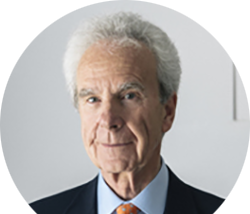
Abstract
A calibrated and validated computational model for tumor growth is adapted for the simulation of nanoparticle mediated drug delivery. The model has been developed within the framework of Transport Oncophysics. The governing equations are obtained via the Thermodynamically Constrained Averaging Theory (TCAT) and the calibration has been carried out within a Bayesian approach. The barriers to overcome for a successful drug delivery which can be handled by the model are evidenced. It is shown that we can predict where the injected Nanoparticles end up in the tumor and that we can simulate the efficiency of an anticancer drug. Different aspects related to drug delivery are then solved by means of Artificial Neural Networks. In particular, the determination of the optimal configuration for maximizing Nanoparticle accumulation at the diseased site is shown as well as the reliable identification of the physical model parameters, e.g. the killing action of the drug. Finally, an example involving the use of Machine Learning for liposome design and optimization within an interdisciplinary computational-experimental approach will be shown.
References
D.P. Boso, S-Y. Lee, M. Ferrari, B. A. Schrefler, P. Decuzzi, Optimizing Particle Size for Targeting the Diseased Microvasculature: from Experiments to Artificial Neural Networks, International Journal of Nanomedicine, 2011:6. 1517-1526.
Pietro Mascheroni , Daniela Boso , Luigi Preziosi , Bernhard A. Schrefler , Evaluating the influence of mechanical stress on anticancer treatments through a multiphase porous media model, 2017. Journal of Theoretical Biology 421, 179-188.
R. Santagiuliana, M. Milosevic, B. Milicevic, G. Siume, V. Simic, A. Ziemys, M. Kojic, B.A. Schrefler, Coupling tumor growth and bio distribution models, Biomedical Microdevices, 21 (2019), 2, 33
B. Wirthl, J. Kremheller, BA. Schrefler, WA.Wall, Extension of a multiphase tumour growth model to study nanoparticle delivery to solid tumours. PLoS ONE 15(2) (2020): e0228443
D.P. Boso, D. Di Mascolo, R. Santagiuliana, P. Decuzzi, B.A. Schrefler, Drug delivery: experiments, mathematical modelling and machine learning, Computers in Biology and Medicine, 123 (2020), 103820,
S. Hervas-Raluy, B. Wirthl, P. Enrique Guerrero, G. Robalo Rei, J. Nitzler, E. Coronado, J. Font De Mora, B. A. Schrefler, M. J. Gomez-Benito, J. M. Garcia-Aznar, W. A. Wall, Tumour growth: Bayesian parameter calibration of a multiphase porous media model based on in vitro observations of Neuroblastoma spheroid growth in a hydrogel microenvironment, bioRxiv https://doi.org/10.1101/2022.09.26.509452
Biography
Dr Bernhard Schrefler, educated at the University of Padua (MSc), and at the University of Wales (PhD and DSc), Professor (1980-2013) and currently Professor emeritus at the University of Padua, Affiliated Professor at the Institute of Academic Medicine, Houston, TX and Hans Fischer Senior Fellow Alumni of the Institute for Advanced Study, Technical University of Munich. He was inducted to the National (Italian) Academy of Sciences (“dei XL”), Galileian Accademy, Istituto Veneto and Istituto Lombardo di Scienze, Lettere ed Arti. Honorary Fellow of the University of Swansea; Honorary Professor of the Dalian University of Technology, and Fellow of IACM (International Association for Computational Mechanics). Knighted by the French Republic in the Order of Academic Palms. Five honorary doctorates (St. Petersburg State Technical University, the University of Technology of Lodz, the Leibniz University of Hannover, the Russian Academy of Sciences, and the Ecole Normale Supérieure at Cachan); Biot, Euler, Gauss-Newton, Zienkiewicz Medals; Computational Mechanics and IACM Awards, ICCES Lifetime Achievement Award, INTERPORE Lifetime Honorary Membership Award, Fry International Sustainability Award.
Professor Schrefler’s research interests are in porous media mechanics applied to geomaterials, such as rocks, concrete and bricks, environmental geomechanics, soil mechanics and reservoir engineering; in bio-medical engineering; in structural-and materials engineering; and in thermomechanical problems in controlled thermonuclear fusion technology.
Prof. Christian Hellmich
Title: Analytical Mechanics of Materials and Structures: from Micromechanical Theories to Applications in Tunnel Engineering
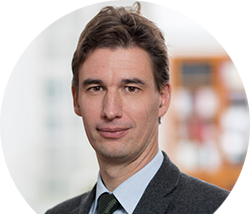
Abstract
With the maturation of symbolic computer programming, the field of “computational mechanics” may have entered a new transformative era – going beyond the processing of numbers, towards the processing of formulae. In this context, symbolic computer programming gives access to analytical formulae of lengths and complexities which cannot be reached manually, while, at the same time, avoiding all the uncertainties coming with massive data representing purely number-based results, including the errors associated with them.
The talk will highlight latest corresponding results from the growing field of “analytical mechanics”, associated with material and structural mechanics, including the following:
(i) the generalization of the famous Mori-Tanaka estimate [1] towards arbitrary multi-shape composites, in terms of micro-to-macro relations and homogenized stiffnesses [2]; with symmetrization [3] and Hill tensor transformation [4] as key methodological ingredients;
(ii) closed-form solutions for the differential equilibrium equations of cylindrical tunnel shells subjected to various types of ground actions [5], with the principle of virtual power [6] serving as tool for stress-to-resultant-force homogenization.
Providing fast and explicit access to otherwise unobtainable solutions, the aforementioned results are expected to support the ongoing green transformation, e.g. through optimization of biogenic material design [7], or by maximizing the longevity of engineering structures [8].
References
[1] T Mori, K Tanaka (1973), Acta Metallurgica 21(5), 571-574.
[2] N Jiménez Segura, B Pichler, Ch Hellmich (2023), Mechanics of Materials 178, 104555.
[3] I Sevostianov, M Kachanov (2014), Mechanics of Materials 69(1), 93-105.
[4] J-F Barthélémy (2020), International Journal of Engineering Science 154, 103326.
[5] R Scharf, B Pichler, R Heissenberger, B Moritz, Ch Hellmich (2022), Acta Mech 233, 2989–3019.
[6] P Germain (1973), SIAM Journal on Applied Mathematics 25(3), 556-575
[7] T Bader, F Dastoorian, G Ebrahimi, G Unger, O Lahayne, Ch Hellmich, B Pichler (2016), Composites Part B: Engineering, 95, 96-104.
[8] Ch Hellmich, B Pichler, R Heissenberger, B Moritz (2020), Geomechanics and Tunnelling 13, 538-546.
Biography
Dr Christian Hellmich is full professor at Technische Universität Wien (TUW, Vienna, Austria), directing there the Institute for Mechanics of Materials and Structures. At TUW, he received his (civil) engineering diploma (1995), his Dr.techn. (PhD, 1999), and his habilitation (2004). Being on leave from his academic position at TUW, he was Postdoctoral Fellow at M.I.T. from 2000 to 2002; and over the years, he has held several short-term visiting professorships in France, Italy, and Germany.
Together with collaborators across the globe, he has developed (micro)structural bio-chemomechanical models, in terms of theoretical foundations, computational realization, and experimental validation for various biological and man-made systems; including bone and soft tissues, cement and concrete, wood and wood composites, rock and soil, brick, steel, rubber, graphene, DNA, as well as metal-, mineral-, polymer-, and glass-based biomaterials. These mathematical models are employed in concrete, tunnel, pipeline, and biomedical engineering.
Also trained as a violinist, he has been active at the crossroads of Science and Arts, from which he takes a broad cultural perspective on the nature of universities and their role in society. This is also reflected by his interdisciplinary work integrating engineers, physicists, chemists, biologists, and medical doctors.
Christian Hellmich has co-authored 167 peer-reviewed publications; and about the same amount of book chapters and proceedings papers; he has given more than 300 presentations at international conferences and universities, often as invited, keynote, or plenary speaker.
He serves in editorial roles for several peer-reviewed journals, including Journal of Engineering Mechanics (ASCE), Mechanics of Materials, and AIP Applied Physics Reviews. He has provided extensive reviewing and advisory service for various universities and science foundations, including his role as a panel member for the European Research Council (ERC). He has also served in the Engineering Mechanics Institute of the American Society of Civil Engineers (EMI-ASCE), in particular so in the Board of Governors and in various technical committees, as president of the International Association for Concrete Creep (IA-CONCREEP), as president of the Austrian Chapter of the European Society of
Biomechanics (ESB), as symposium organizer for the Materials Research Society (MRS), and in the Board of Directors of the Young Academy of the Austrian Academy of Sciences (ÖAW).
His activities have been recognized through several national and international awards, such as the Kardinal Innitzer Advancement Award of the Archdiocese of Vienna (2004), the Science Recognition Award of the Region of Lower Austria (2005), the Zienkiewicz Award of the European Community on Computational Methods in Applied Sciences (ECCOMAS, 2008), an ERC grant (2010), and the Walter L.
Huber Research Prize of ASCE (2012); moreover, he was named Fellow of EMI (2014), Fellow of the European Alliance of Medical and Biological Engineering & Sciences (EAMBES, 2019), corresponding member of ÖAW (2019), and Fellow of the Society of Engineering Science (SES, 2023).
Prof. Boris Jeremić
Title: Engineering Analysis Toolbox, The Real-ESSI Simulator System
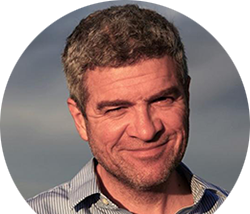
Abstract
Engineering design and assessment of soil-structure systems require knowledge about, competence in and capability to analyze static and dynamic behavior of soils, structures and their interaction (SSI). This is particularly true for large, important objects such as buildings, bridges, dams, power plants, for which safety and economy dominates all phases of design and assessment. Practicing engineers, knowledgeable in statics and dynamics of soils and structures, need versatile, efficient analysis tools to explore different soil-structure interacting (SSI) system design options. Analysis tools need to be capable to analyze models of different levels of sophistication, and to offer engineers capability to model all necessary, required components of the SSI system.
Presented will be the Real-ESSI Simulator system (http://real-essi.us/), a numerical modeling and simulation system that was designed and developed to empower practicing engineers to design new and assess state of SSI systems using high fidelity numerical analysis. Briefly described will be methods for static and dynamic, deterministic and probabilistic, sequential and parallel, analysis of soil-structure systems loaded with service and hazard loads. A number of examples will be used to illustrate practicing engineers toolbox, the Real-ESSI Simulator system.
Biography
Dr Boris Jeremić is a Professor of Civil Engineering in the Department of Civil and Environmental Engineering at the University of California, Davis, CA, USA. Professor Jeremic obtained his Civil Engineering Diploma Degree at the University of Belgrade, Yugoslavia in 1989, Master of Science in 1994 and Doctor of Philosophy in Civil Engineering at the University of Colorado in Boulder, Colorado in 1997. From 1989-1992 Professor Jeremić worked as a design engineer at the Energoprojekt dam design company in Belgrade, Yugoslavia and on the Bekhme dam project in Iraq. From 1997-1999 he was an Assistant Professor at Clarkson University and has been at University of California at Davis since 1999..
Professor Jeremic’s primary research interests are related to modeling and simulation of static and dynamic, inelastic, deterministic and probabilistic behavior of civil engineering objects. Focus is on development and use of methods that reduce modeling, epistemic uncertainty, and that propagate parametric, aleatory uncertainty. In other words, focus is on development and use of methods that predict and inform. He has authored a number of technical papers, reports, book chapters, books, and programs, that are all available through his web site: LINK
Prof. Hermann G. Matthies
Title: Stochastic Modelling of Tensor Fields Adapted to Elasticity Classes
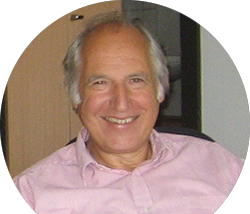
Abstract
Uncertain material properties are often described in probabilistic terms. And although the properties of the material may be uncertain, some relations may not be uncertain at all. One possible kind of such a relation are spatial symmetries and invariances of the material. It is well known that such symmetries and invariances play an important role in the behaviour of materials, and thus one should try to respect this in the probabilistic description and modelling of material properties. The focus is here on material properties described by the class of physically symmetric fourth order tensors, of which the elasticity tensor is a prime example. We shall concentrate on spatial point symmetries or invariances under rotations, a classical subject in deterministic elasticity, a topic which has already attracted considerable attention, e.g. [5], and offer a sketch how this can be connected to stochastic geometric symmetries or invariances in the modelling of spatial tensor fields. The culmination of a long series of works on such representations of tensors of any order in the presence of spatial symmetries or invariances is given in [7], but the additional property of physical symmetry implies a possible spectral theory and decomposition to separate scale or strength from orientation, and this will be the topic here.
The characterisation of elasticity tensors through their spectral decomposition, i.e. eigenvalues, is is an old subject, already started by Lord Kelvin (W.K. Thomson) [13, 14], but little appreciated at the time and then apparently almost forgotten, to be picked up again by [3], and later, among others, by [9, 8, 11]. A historical account in modern notation may be found in [6].
An approach on the basis of the spectral decomposition was used in [10] to model random second order symmetric tensors fields. As for second order symmetric tensors there are only three classes in 3D and two classes in 2D, this is quickly reviewed to easily explain the concepts.
The elasticity tensor is not only a physically symmetric tensor, but each realisation usually has to be positive definite. Looking at random ensembles resp. probability distributions on such tensors, one wants to preserve those properties. This is achieved by constructing a mapping from a product Lie group to the positive tensors. The corresponding Lie algebra is then a direct sum of vector spaces, and the appropriate exponential map, which is easily computed in this case, guarantees positive definiteness. Additionally often one wants to prescribe certain classes of spatial symmetries and invariances for each member of the whole ensemble, while at the same time demanding that the mean or expected value of the ensemble be subject to a possibly ‘higher’ spatial invariance class.
In formulating a modelling framework which respects these requirements, one has to explore the mathematical structure of the underlying sample space of all such tensors, in the course of which it appears expedient to introduce a new distance measures or metric between such tensors. It is shown how the proposed framework allows the random ensemble to be modelled and generated, independently in its scaling and orientational or directional aspects.
To achieve this modelling we collect for the fourth-order elasticity tensor for all eight elastic symmetry classes [4] in 3D and for the four symmetry classes [1] in 2D the invariant subspaces with appropriate Kelvin eigenvector basis and the corresponding eigenvalue — the Kelvin stiffnesses or Kelvin elastic moduli [13, 14, 6] — are introduced. In a slight deviation [8] from the traditional Voigt notation, e.g. [12], the fourth order elasticity tensor is mapped onto a 6-dimensional tensor of second order, the Kelvin notation, which will then be used for the representation. In this 6-dimensional strain-stress space one might distinguish the rotations induced by true spatial rotations from others, which are strain redistributions. The rotations induced by spatial rotations allow the well-known group theoretic reduction, e.g. [2], to the well known zero-non zero patterns resp. block diagonal forms which characterise the different elasticity classes in 2D and 3D, e.g. [1, 4]. Rotations in the 6-dimensional strain-stress space which only redistribute strains can then be used to achieve a complete diagonalisation.
On this basis a method to generate random elasticity tensors is described. The tensor is in this way modelled by one spatial vector which describes a spatial orientation through its direction and magnitude — leading to a reduction of the symmetry group representation and the well-known reduced forms of the tensor-tuples of parameters to describe the logarithms of the eigenvalues resp. Kelvin moduli, plus tuples of parameters to describe the ‘strain distributors’, which furnish an orthogonal transformation in strain space to completely diagonalise the tensor from its reduced form.
References
[1] A. Blinowski, J. Ostrowska-Maciejewska, J. Rychlewski. Two-dimensional Hooke’s tensors — isotropic decomposition, effective symmetry criteria, Arch Mech 48, 325–345, 1996.
[2] A. F¨assler, E. Stiefel. Group Theoretical Methods and Their Applications, Birkh¨auser, 1992.
[3] F.I. Fedorov. Theory of Elastic Waves in Crystals, Plenum Press, 1968.
[4] S. Forte, M. Vianello. Symmetry Classes for Elasticity Tensors, J Elast 43, 81–108, 1996.
[5] J. Guilleminot, C. Soize. Non-Gaussian positive-definite matrix-valued random fields with constrained eigenvalues: application to random elasticity tensors with uncertain material symmetries, Int. J. Numer. Methods Eng. 88, 1128–1151, 2011.
[6] K. Helbig. Review paper: What Kelvin might have written about Elasticity, Geophysical Prospecting 61, 1–20, 2013.
[7] A. Malyarenko, M. Ostoja-Starzewski. Tensor-Valued Random Fields for Continuum Physics, Cambridge University Press, 2019.
[8] M.M. Mehrabadi and S.C. Cowin. Eigentensors of linear anisotropic elastic materials, Quart J Mech Appl Math. 43, 15–41, 1990.
[9] J. Rychlewski. On Hooke’s law, Prikl. Matem. Mekhan. 48, 420–435, 1984, (in Polish); English translation in Journal of Mathematics and Mechanics (Oxford), 303–314, 1984.
[10] S.K. Shivanand, B. Rosi´c, H.G. Matthies. Stochastic Modelling of Symmetric Positive Definite Material Tensors, arXiv:2109.07962 [math.NA], 2022.
[11] S. Sutcliffe. Spectral decomposition of the elasticity tensor, J Appl Mech 59, 762–773, 1992.
[12] R.F. Tinder. Tensor properties of solids: Phenomenological Development of the Tensor Properties of Crystals, Morgan & Claypool, 2008.
[13] W.K. Thomson (Lord Kelvin). XXI Elements of a mathematical theory of elasticity, Part 1, On stresses and strains, Philosophical Transactions of the Royal Society 146, 481–498, 1856.
[14] W.K. Thomson (Lord Kelvin). Elasticity, Encyclopedia Britannica, 9th ed., vol. 7, 796–825. Appendix: Mathematical Theory of Elasticity, 819–825, 1878.
1 Institute of Scientific Computing, TU Braunschweig, Germany, h.matthies@tu-bs.de
2 The Alan Turing Institute, London, United Kingdom, sshivanand@turing.ac.uk
3 Applied Mechanics and Data Analysis, University of Twente, Netherlands, b.rosic@utwente.nl
Biography
Dr Hermann G. Matthies is an Emeritus Professor in the Carl-Friedrich-Gauss faculty at TU Braunschweig (Germany). A native of Hamburg (Germany), he has his first degree from TU Berlin (Germany), where he studied mathematics, computer science, physics, and engineering, and he obtained his PhD in mathematics at MIT (USA). In the following, he worked for an extended period in industry in different places and functions, where he was concerned with the development of algorithms for finite element analyses and plasticity, and their application in offshore engineering, naval architecture, civil engineering, and wind energy, among others. Later he returned to academia to become the founding director of the Institute of Scientific Computing at the TU Braunschweig, where he also served as the director of the University Computing Centre. He has received a number of international distinctions, among them the IACM Fellow Award and the Gay-Lussac Humboldt Prize for Experienced Researchers of the French Academy of Sciences, and he is a full member of the academy “Braunschweigische Wissenschaftliche Gesellschaft”. He has also been an invited or visting professor at numerous universities in different countries. His current research interests include uncertainty quantification, inverse and identification problems, algorithms for coupled problems, as well as non-smooth problems like plasticity.
Prof. Nenad Đorđević
Title: Modelling of High Velocity Impact on Carbon Fibre Composite Materials
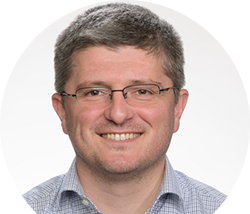
Abstract
This talk describes our recent work on development of computational methods and constitutive models for modelling carbon fibre composite materials undergoing high strain rate loading, including shock loading. The modelling tools, defined at the continuum scale, are used in analysis of the real impact events typical for aerospace structures, when the shock wave is created and propagate through the material. Due to their excellent strength to density ratio, composites have become a material of choice in the design of new lighter, greener, safer and more reliable structures. However, pronounced anisotropy and heterogeneity of the composites make the material behaviour complex, especially when the material undergoes extreme loading conditions, which feature nonlinear thermo-mechanical response, extremely large deformations, propagation of cracks with arbitrary and complex paths, shockwave induced phase changes etc.
Constitutive model for fibre reinforced composites with progressive damage was developed based on spectral decomposition of the material stiffness tensor and an assumption that each strain energy component represents free energy for a characteristic deformation mode. Due to the stiffness tensor symmetry, the deformation modes are not interacting in the proposed model. The criteria for damage initiation for each deformation mode is defined as a critical strain energy limit. Damage and its evolution are modelled by reduction of the principal material stiffness based on the effective stress concept and the hypothesis of strain energy equivalence. To model the material response to the shock loading, the constitutive model was coupled with a vector Equation of State. The model was implemented into Dyna3d explicit hydrocode and our in-house developed SPH code. The modelling approach was verified and validated in a series of single element tests, plate impact test and high velocity impact of hard projectile impact on an aerospace grade carbon fibre reinforced plastic.
To address a problem of damage and deformation localisation typical for strain softening in the quasi brittle materials, which leads to ill-posed boundary value problem and mesh dependency, we proposed two solutions. The first is based on using SPH as inherently nonlocal numerical method in the damaged areas, where the SPH smoothing length is linked to the material characteristic damage length scale. The second solution is applicable to finite element codes, where damage effects are implemented as the equivalent damage force, which contributes to the force on the right-hand side of the balance of linear momentum equation. This way, the problem remains well posed during the material softening, partial differential equations remain unchanged and mesh dependency significantly reduced. Perfomance of these computational tools was demonstrated in modelling of stress wave propagation problem and hard projectile impact on composite plate.
Biography
Dr Nenad Đorđević is a Senior Lecturer in Mechanical Engineering at Brunel University London, Research Centre Director (Centre for Assessment of Structures and Materials under Extreme Conditions) and a course director of an MSc programme with 18 years of experience in research and teaching. He has been working in the field of applied and computational solid mechanics on development of linear and non-linear numerical codes (FEM and SPH) for dynamic analysis of solids and structures.
The main area of Nenad’s research is development of constitutive models in the framework of thermodynamics and configurational mechanics, applicable to dynamic analysis of metals and composites, and to the finite deformation problems. In particular, his research is oriented towards damage and structural integrity analysis, simulation led design to support lightweighting, and simulation of a range of impact and crashworthiness problems in aerospace, naval and automotive industry. Another area of interest is design and application of experimental techniques for characterisation of dynamic behaviour of materials, including characterisation of composites. Nenad has been involved in several European programmes, including a WP lead in the Horizon2020 project EXTREME, Working Group lead in COST Action HISTRATE, TEMPUS, FP6 and FP7 programmes and a number of industry sponsored projects, developed in collaboration with Rolls Royce, AWE, McLaren F1, Lotus F1 (currently Alpine), Catheram, Lockheed Martin, Office of Naval Research (USA) etc. He is a co-author of 25 papers, published in high impact journals, and over 50 publications presented at the international conferences. Nenad has been a supervisor of six PhD students.
Prof. Saša Kenjereš
Title: Development of the Virtual Surgery Procedure Based on the Combined Eulerian Finite-Volume CFD and 4D-Flow MRI Approach for the Patient-specific Fontan Circulation
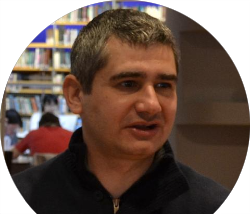
Abstract
The human cardiovascular system is immensely altered by the occurrence of a univentricular heart condition (occurs in 3 per 10000 live births), resulting in increased blood flow resistance, and in the mixing of the pulmonary and systemic circulation, [1, 2, 3]. Without rapid surgery, infants with such condition will not survive. The Fontan surgical procedure (based on the making of the total cavopulmonary connection (TCPC)) has been proposed and improved over the years in clinical practice. Unfortunately, the Fontan procedure can also lead to increased blood flow resistance, and development of the pulmonary malformations (PAVMs), followed by an increased risk of thrombosis formation, [1, 2, 3]. In the present work, we developed a novel combined Magnetic Resonance Imaging (MRI) and Computational Fluid Dynamics (CFD) approach that can be applied to further optimization and significant improvements of the current surgical procedure. The mathematical model for the prediction of the blood flow patterns and resulting mixedness is based on solving a set of non-linear PDEs: (i) conservation of mass, (ii) conservation of momentum (Navier-Stokes), (iii) conservation of species (i.e. mixture fraction of the blood originating from the liver and superior vena cava, respectively). The latter is solved by the originally developed Eulerian approach, i.e. by solving the convection/diffusion/reaction type of the PDE and corresponding mixture fractions. The considered geometry of the solution domain and inlet conditions are extracted from the 3T MRI 4D Flow scans, making the numerical simulations patient-specific. The discretized form of the transport equations (i-ii-iii) is solved by the final volume (FV) approach, which is the second-order accurate in time and space utilizing the polyhedral numerical mesh, [4]. The level of blood mixing at the caudal (starting) and cranial conduit (ending) planes are calculated and compared with the ideal mixing assumption. Next, the hepatic flow distribution and corresponding power losses are calculated. Based on simulation results, we demonstrated that here developed Eulerian approach in predicting the local level of the blood mixedness was numerically much more efficient, more accurate, and easier for the postprocessing than the corresponding Lagrangian methods. Finally, we will address the patient specific conduit-size optimization and thrombosis risk estimation for 10-20 cases.
References
[1] D. A. de Zelicourt, A. Marsden, M. A. Fogel, A. P. Yoganathan (2010), ”Imaging and patient-specific simulations for the Fontan surgery: current methodologies and clinical applications”, Progress in Pediatric Cardiology 30 (1-2), pp.31-44.
[2] S. F. van der Woude, F. M. Rijnberg, M. G. Hazekamp, M. R. M. Jongbloed, S. Kenjeres, H. J. Lamb, J. J. Westenberg, A. A. W. Roest, J. J. Wentzel (2021), ”The Influence of Respiration on Blood Flow in the Fontan Circulation: Insights for Imaging-Based Clinical Evaluation of the Total Cavopulmonary Connection”, Frontiers in Cardiovascular Medicine 8 683849, pp.1-12.
[3] F. M. Rijnberg, S. F. van der Woude, H. C. van Assen, J. J. Juffermans, M. G. Hazekamp, M. R. M. Jongbloed, S. Kenjeres, H. J. Lamb, J. J. Westenberg, J. J. Wentzel, A. A. W. Roest (2021), ”Non-uniform mixing of hepatic venous flow and inferior vena cava flow in the Fontan conduit”, Journal of the Royal Society Interface 18 20201027, pp.1-8.
[4] S. Kenjeres (2016), ”On Recent Progress in Modelling and Simulations of Multi-scale Transfer of Mass, Momentum and Particles in Bio-medical Applications”, Flow, Turbulence and Combustion 96, pp.837-860
Biography
Dr. Saša Kenjereš is a Full Professor of Applied Physics and Chemical Engineering at the Delft University of Technology, Delft, The Netherlands. He received his Ph.D. in Applied Physics in 1999 at the Delft University of Technology, The Netherlands. From 2001 to 2005 he was a Research Fellow of the Royal Netherlands Academy of Sciences and Arts (KNAW). From 2005 to 2006 he was a Burgers Visiting Associate Professor at the University of Maryland, College Park, USA, Institute of Physical Science and Technology, Computer and Space Science/Earth Systems Science Interdisciplinary Center. He received ERCOFTAC (European Research Community on Flow, Turbulence, and Combustion) and Leonhard Euler Centre Visitor Fellowships at ETH Zurich, Switzerland (2002, 2003, 2004, 2008, and 2014). He was the Marie-Curie Visiting Professor at the AGH University of Science and Technology, Krakow, Poland (2007-2013). He is currently (2022-present) also Visiting Professor of the double-degree Energy and Environmental Engineering MSc program between the Shibura Institute of Technology, Tokyo, Japan, and the AGH University of Science and Technology, Krakow, Poland.
His research interests include: (i) multiscale transport phenomena in biomedical applications (numerical methods, computer simulations, and experiments); (ii) advanced fluid dynamics, heat and mass transfer, and turbulence (mathematical modeling, simulations, and experiments); (iii) coupling fluid mechanics and electromagnetism (magnetohydrodynamics, MHD); (iv) environmental flows, turbulent dispersion in complex urban areas, atmospheric chemistry and crowd behavior; (v) high-performance supercomputing (HPC);
Contact and Info
You can contact the conference Secretariat at following E-mail for any question and follow us on our website for all the latest updates.
